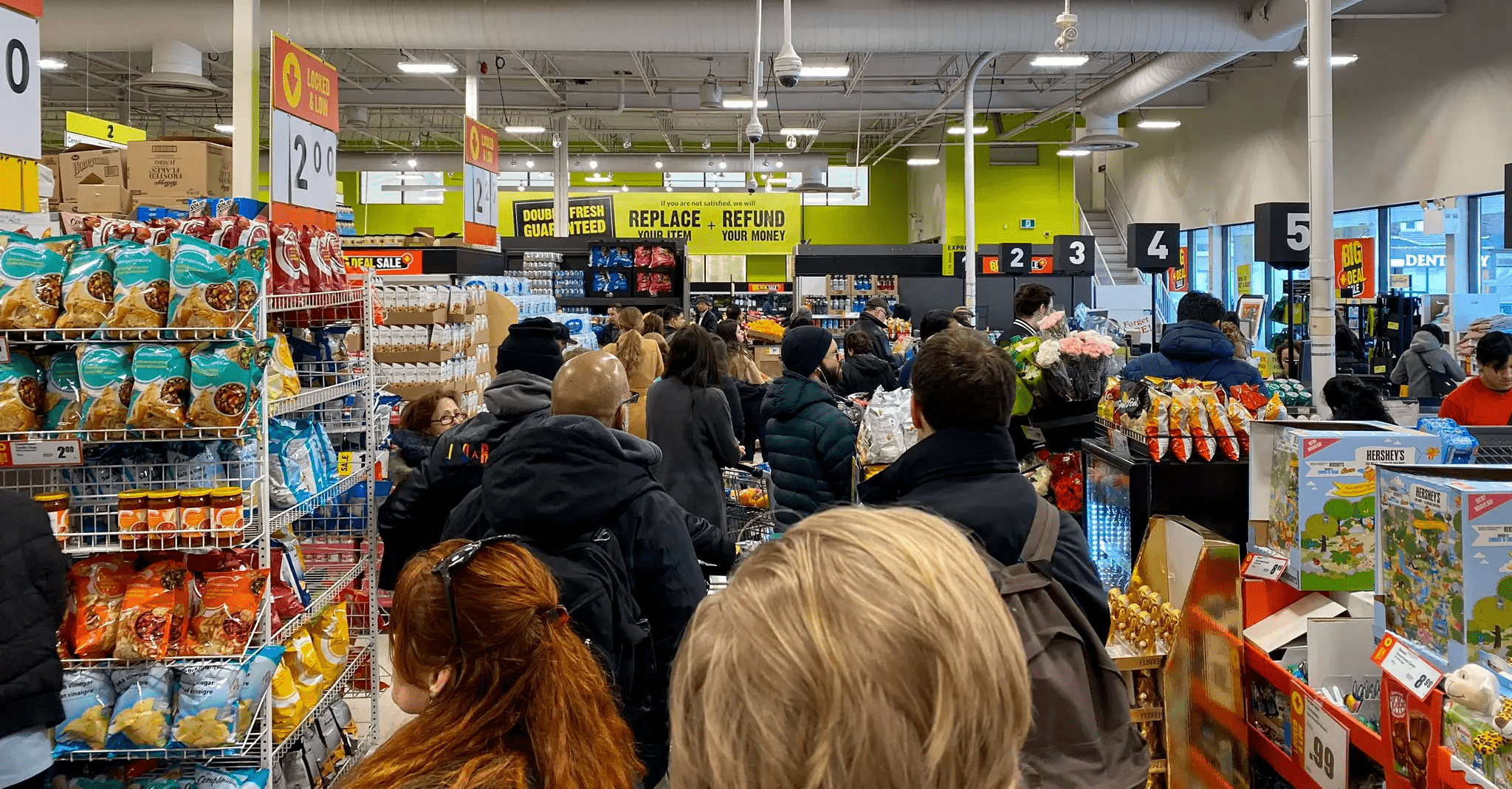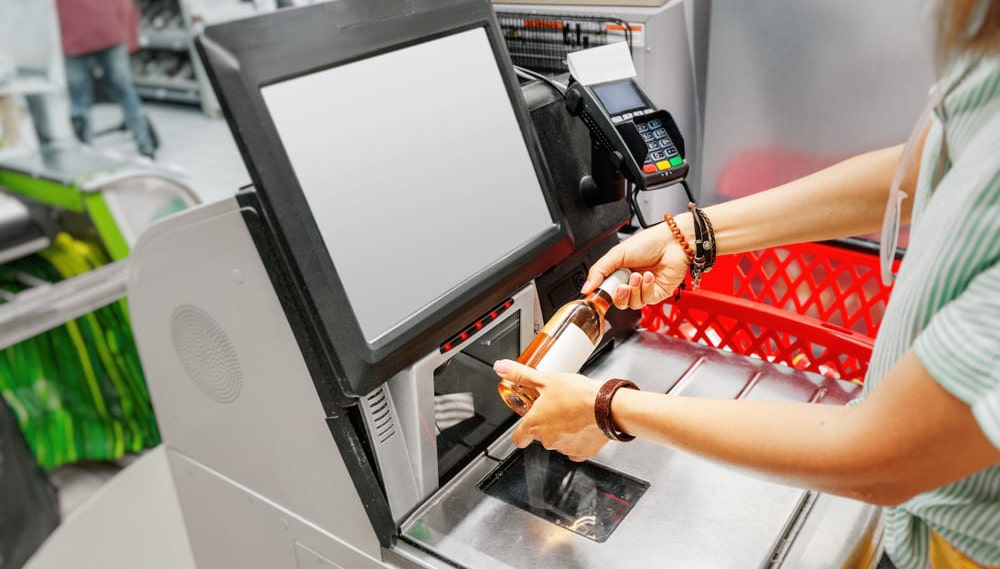
Long Lines In Your Retail Store. Avoid or Adopt?
The issue of reducing long lines in the store is a concern for every retailer and store owner. However, as well as improving the quality of customer service directly at the checkout.
Upsells and cross-sells can turn checkout queues into new sales opportunities. Perhaps queues are not as bad as previously thought.
If the store couldn't avoid queues and customers are waiting in line for more than 5 minutes, then here the customer should get only a positive and interesting shopping experience. After all, the checkout line is an ideal opportunity to make an impulse purchase. Optimizing the checkout area is important for maximizing profits through impulse buying.
Encourage Impulse Buying
Lines at the checkout can be inevitable, so it's up to the retailer to provide an attractive layout of goods. By the way, 8 out of 10 buyers waiting in line are ready to make an impulse purchase.
Merchandising at the Checkout
An effective sales tactic. The layout near the checkouts should be designed and placed based on the rules of merchandising demand analysis, and historical sales. An attractive layout at the checkout area is usually placed with inexpensive goods, new products, discounts, and promotions (buy two items and get two more for free). A good display creates even more attractive to customers.
The use of special sets of goods – product bundling at competitive prices will stimulate additional sales at the checkout. If a customer sees an item already in their cart as part of a presented discounted bundle, they may see this as an opportunity to receive an extra benefit. From the customer's perspective, this will be a smart buying decision – and will be perceived as a time reduction in a line.
Experiment. Some retailers believe that one common queue works better than several. Analyze which lines are effective in your stores.
Checkout Area Location
This is the place where shoppers spend more than 15% of their shopping time. It is necessary to make this area a place of comfort. From the very start, you need to correctly design the checkout equipment, and place showcases, and racks. In this area, the buyer should feel comfortable and spacious. Do not forget to provide additional ventilation or air conditioning so that, the customers and cashiers are in comfortable conditions.
In no case, you shouldn't reduce the checkout area. If there is not enough space, then the line of three people at the checkout will look huge and cause negative emotions among customers.
Interesting Fact
A study by American mathematician Dan Mayer proves that standing in a line behind one person with a trolley full of items is better. It works out quicker than waiting in a line for several customers who are buying fewer items – basket shoppers with 10 or less items. He explains, that it takes 3 seconds to scan every item, and about 40 seconds to make a payment. Therefore, it will be faster for the customer when they are in a queue behind one person with a hundred items than four with 20 items in the basket. After all, 4 payment processes mean a higher probability of problems with transactions and processing. Moreover, we don’t count time for greetings, talking, or quarreling.
It is said shoppers instinctively join queues on the right of a bank of checkout. So, it might be worth trying those on the left.
What Are the Customer Expectations at the Checkout?
Store lines can increase sales if the retailer takes care to meet the customer's expectations. If your goal is to win loyal customers, then the priority is to provide quality customer service both at the checkout and on the trading floor.
Speed, convenience, technology, and positive emotions. Here are the main components that affect customer loyalty.
Offer your customers a choice of payment methods, cash or card, including contactless payments. Provide a choice – stand in line or choose a self-checkout.
Regular Store Checkouts
The quality of customer service at the checkout is the last and most important communication with a customer before they leave the store. A positive shopping and checkout experience enhances customer loyalty.
Giving customers a great last impression is crucial to gaining loyal customers who come back again and again.
Self-Checkouts
Cashless payments have become common, so retailers have taken care of the availability of self-checkouts operating according to the Scan&Bag scenario. You only need to scan the product yourself and pay for it without a seller.

Another Scan&Go shopping scenario is designed for customer convenience. The client independently scans the goods while shopping on the trading floor, and then chooses a convenient payment method already at the checkout. In order to scan goods, the client uses a special device or his own mobile phone with the application installed.
When clients scan and pay for the goods on their own, there is no need to wait in line and contact the cashier. This saves time for customers, providing a positive shopping experience in the store.
Strategies for Line Busting
Self-checkouts are one way to reduce the load on checkouts and reduce queues. But what to do when a line of people who want to save time appears near the self-checkouts?
Answer: Optimize the work of cashiers and the load on checkouts, open additional cash desks, and attract mobile cashiers to help at self-checkouts. Any tactics are welcome that will help reduce waiting times, and queues, and speed up the payment process.
Another method of line busting and reducing the load on the checkout is to provide customers with the ability to order goods online and pick them up at the store. By offering customers different shopping and delivery options, the retailer expands the target customer segment and increases sales. Customers like not to pay for delivery and fast service. There are customers who prefer shopping in the store. And there are those who buy in the store today and buy online tomorrow. Covering more customers with your services and providing the opportunity to choose a convenient type of purchase is the most effective tactic for successful sales.
Omnichannel Retail
Mixed shopping strategies. Online shopping + Purchases in a physical store + Pickup
BOPIS
(buy online, pickup in-store – buy online, pick up in-store)
The service of ordering goods online with the ability to pick up the goods yourself in the store. In other words, a store pickup service. Here the customer comes to the store to pick up their order. According to the latest trends, customers prefer retailers that offer purchases in a physical store and at the same time make it possible to order goods online. A customer who orders goods via the Internet, and then picks up the order, can make an impulse purchase in the store.
It also allows retailers to enhance the customer experience and adapt it to the current digital age. This means attracting customers to your physical stores and providing an opportunity to make additional sales and increase customer acquisition and loyalty to the company. In addition, these are opportunities for customers to see in real-time what goods are available in the store.
Curbside Pickup
Curbside pickup is a service whereby customers place orders online and then arrive at a retail location in their car to collect orders. That is delivery to the client's car parked near the store.
Curbside Pickup is as follows:
- the buyer orders goods online to pick them up at a store or restaurant;
- when the order is ready, the buyer parks in a special place near the store;
- the store staff brings the order to the customer's car, so there’s no need to get out of the car;
- some retailers use GPS-enabled delivery services that automatically notify store staff when a customer arrives.
This delivery model offers convenience, flexibility, and speed to customers.
It would probably be a good idea to be able to add items to their baskets via mobile app at the moment when the customer arrives at the store. New opportunities for impulse purchases and an increase in additional sales of goods.
For these additional orders, stores can create a small inventory of the most popular items, allowing store staff to find these goods and add them to the orders easily.
Some retailers encourage customers to place such orders of goods (delivered to a car) using special discounts and promotions on goods that are only available for pickup. The practice of picking up an order without getting out of the car is convenient and has long been used in the McDonald's chain. Chains of physical stores began to use this method of ordering and receiving goods. Large retailers Target and Walmart have started offering this service to provide more convenience for their customers during the coronavirus pandemic. Small chains and grocery stores picked up their idea.
This service allowed to increase sales of stores and remain competitive. This has become one of the opportunities to continue selling during the pandemic. Thus, customers can get all the benefits of store shopping without entering the store building.
Delivery to the client's car is very popular among Americans because it allows you to pick up the goods on the day of the order and not to wait several days for home delivery. Customers like the convenient, fast, and safe shopping experience. Therefore, many retailers continue to offer this service in their networks.
Benefits of mixed shopping strategies for retailers:
- reducing the cost of arranging new checkouts or additional retail space;
- advantages over online stores on timely delivery.
These combinations of online and brick-and-mortar functions are opportunities to bring customers to the brick-and-mortar store who used to shop only online.
Benefits for customers:
- saving time on shopping;
- the ability to pick up the ordered goods immediately without waiting for delivery, or when it is convenient for the client;
- review and check the goods before picking up the order;
- no shipping fee.
Conclusions
Queues can be a problem for retailers, who, in reducing the line pursuit, do not see opportunities around to turn a disadvantage into an advantage. Therefore, the challenge is to use the queues for the benefit of the business. According to recent observations, the winners are those stores that try to make the customer's stay in the checkout area as comfortable as possible. With the right approach, the checkout area can increase revenue through impulse buys, cross-sells, and promotions.
At the same time, the implementation of the BOPIS and Curbside Pickup mixed shopping strategies is an extension of customer service beyond the store. Such ways of shopping increase sales and give businesses new opportunities to attract, communicate with customers, and influence their behavior. It's the perfect combination of online shopping and a physical store experience.
Looking for a service to create planograms?
Try a free demo version of PlanoHero




